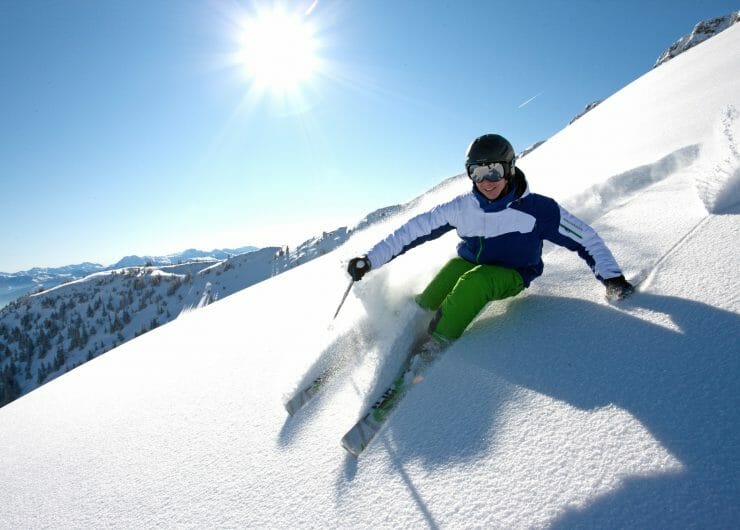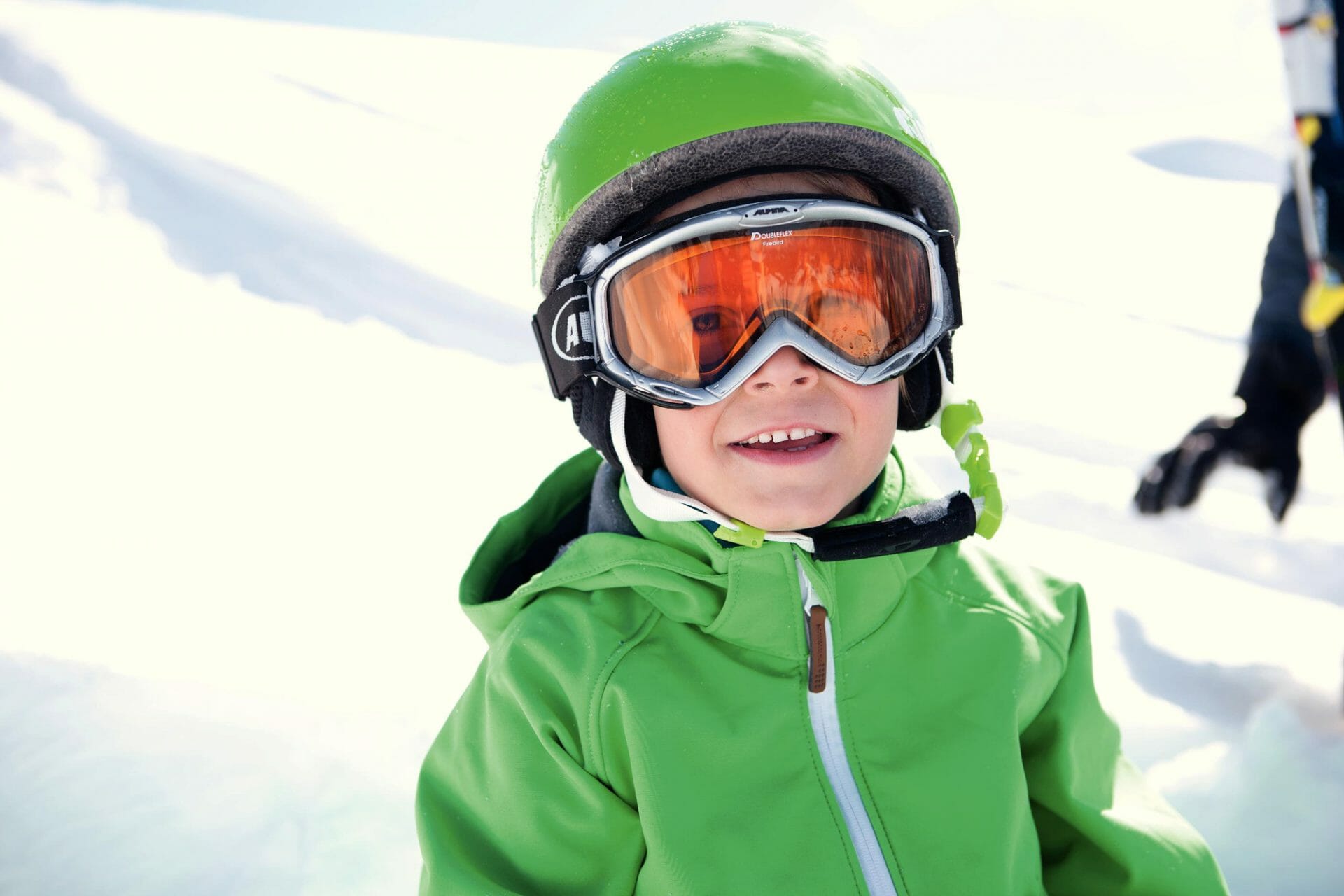
The loose powder snow is barely noticeable under your skis, you float above the slope as if on clouds and make long, steady tracks in the deep snow. When it has freshly snowed in the mountains here in SalzburgerLand, there is almost no stopping us winter sports enthusiasts. Now it’s time to be early in order to make the first tracks and have the ‘virgin powder’ all to yourself. But as tempting as the glittering powder is, it’s important to keep a cool head and check the situation first. What does the avalanche warning service say, how is the snow cover structured and are your own skills even sufficient to get down here safely and without endangering others? Numerous apps and checkpoints at the lift stations provide the necessary information to assess the current situation. And those who prefer to join an experienced ski guide in case of doubt are certainly well advised. Numerous courses on the topic of “Alpine Safety” are offered throughout SalzburgerLand, especially at the beginning of winter – it’s definitely worth taking part.
As soon as you move in alpine terrain, good tour planning is essential. This is true in summer and of course even more so in winter. In recent years, many skiers and snowboarders have discovered touring for themselves and are increasingly leaving the marked pistes and thus the secured terrain. No sooner has it snowed than the freerider’s heart rejoices and we are drawn to the mountains. Now we have to minimise dangers and risks and weigh up what is acceptable. But this doesn’t just start when you leave the secured ski area, but already at home when preparing your tour. By carefully reading the current avalanche situation report (e.g. on www.lawine.salzburg.at) you can already draw the first conclusions: What is basically possible today? The right choice of route is the basic prerequisite for a successful and enjoyable tour. Map material and experienced tourers are a good source for research here.
Emergency equipment
When leaving the secured ski area, you should always carry emergency equipment – consisting of an avalanche transceiver (LVS), an avalanche shovel, an avalanche probe and a first aid kit including a bivouac sack and mobile radio. Many freeriders today also no longer want to do without so-called avalanche airbags, also known as ABS backpacks. The avalanche airbag (ABS Avalanche Airbag System) is a reusable rescue device designed to increase the survival probability of people caught in an avalanche. As a general rule, only those who are absolutely familiar with the location and avalanche and are well equipped should leave secured slopes. Safety equipment and knowledge of how to use it are a must. Suitable sets can be rented from sports shops and ski schools.
FIS, the International Ski Federation, has devised 10 rules that must be observed all over the world.
FIS Rules of the Slopes
1. Consideration for other skiers
Every skier must behave in such a way as to not endanger fellow skiers.
2. Control of Speed and Skiing Style
Don’t ski faster than visibility allows. You must adjust your speed and style to your personal ability levels and the terrain, snow and weather conditions, as well as to how busy the slopes are.
3. Choosing the right line
The skier approaching from behind must choose a line that does not endanger the skier in front of him.
4. Passing
Skiers can pass from above or below, from the right or left, but always leaving sufficient distance that the skier being passed has plenty of room to complete his own motion.
5. Entering and Re-entering
Every skier who is either entering or re-entering the slope must first look up and down the hill to ensure that he can do so without endangering himself or others.
6. Stopping
Every skier should avoid unnecessarily stopping their run at narrow points or where visibility is restricted. If you have fallen in such a place, you must vacate the area as quickly as possible.
7. Ascending/Descending the Mountain
Skiers ascending the mountain or descending on foot must use the edge of the ski slope.
8. Paying Attention to Signs
Every skier must obey all signs, markings and signals.
9. Emergency Assistance
If there is an accident, everyone is obliged to provide assistance as necessary.
10. Personal I.D.
Every skier, whether purely a witness or involved in the incident, is required to provide personal identification in the event of an accident.

© SalzburgerLand Tourismus – young boy skiing
Mandatory helmets for children
Children under the age of 16 must wear a helmet at all times on the pistes of SalzburgerLand, and parents and guardians are responsible for reinforcing this. Children and young people who don’t possess their own helmets can very easily borrow them from ski schools and ski rental outlets in the region. Even though it’s only mandatory for children and young people to wear a helmet, it’s a very good idea for young and old alike to wear head protection, after all prevention is better than cure!

